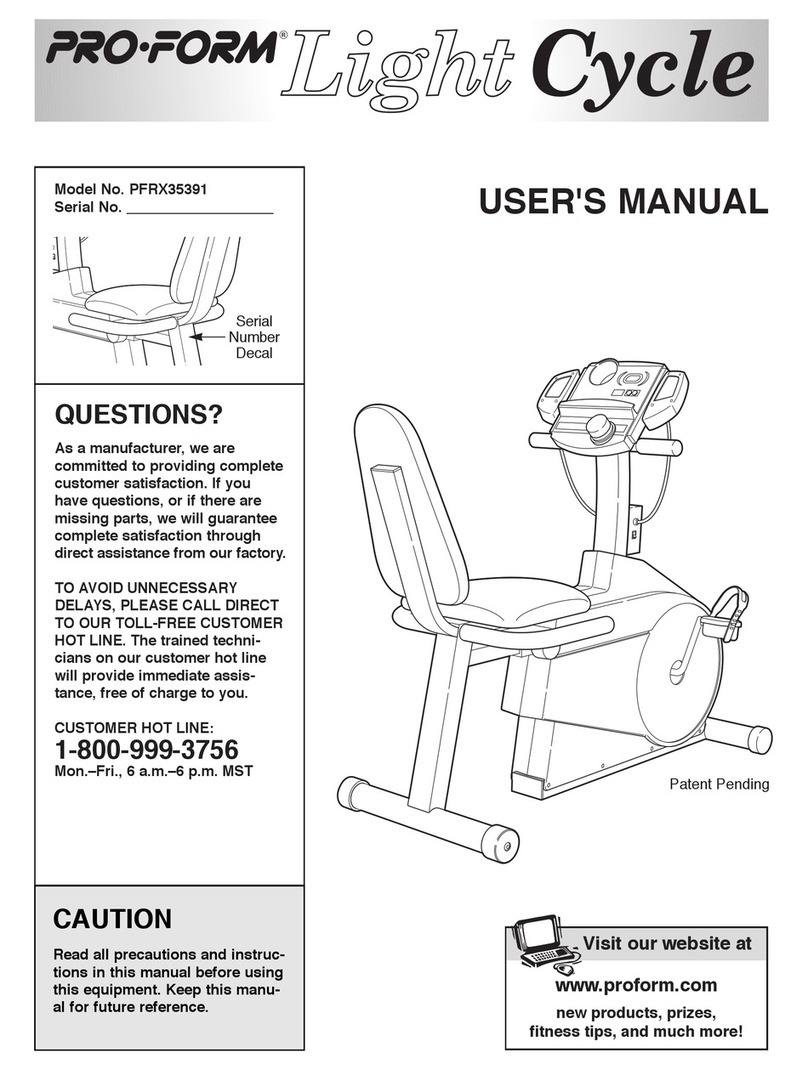Pro-Form XP 185 U User manual
Other Pro-Form Exercise Bike manuals
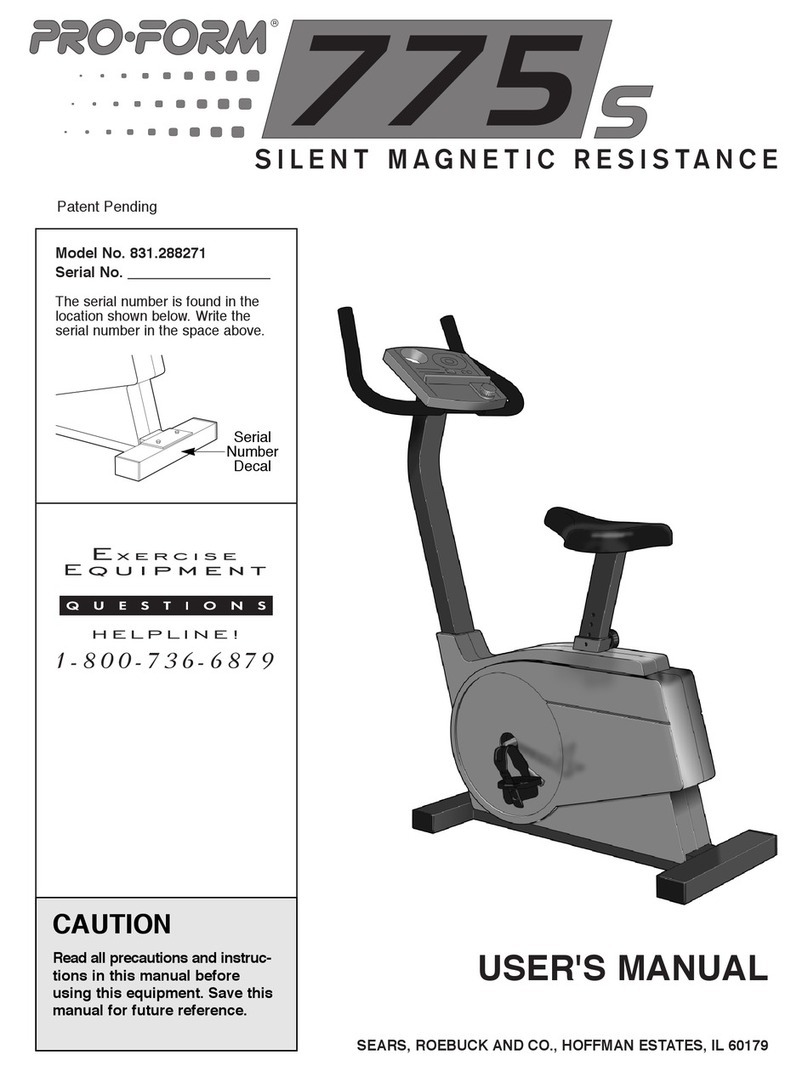
Pro-Form
Pro-Form 831.288271 User manual
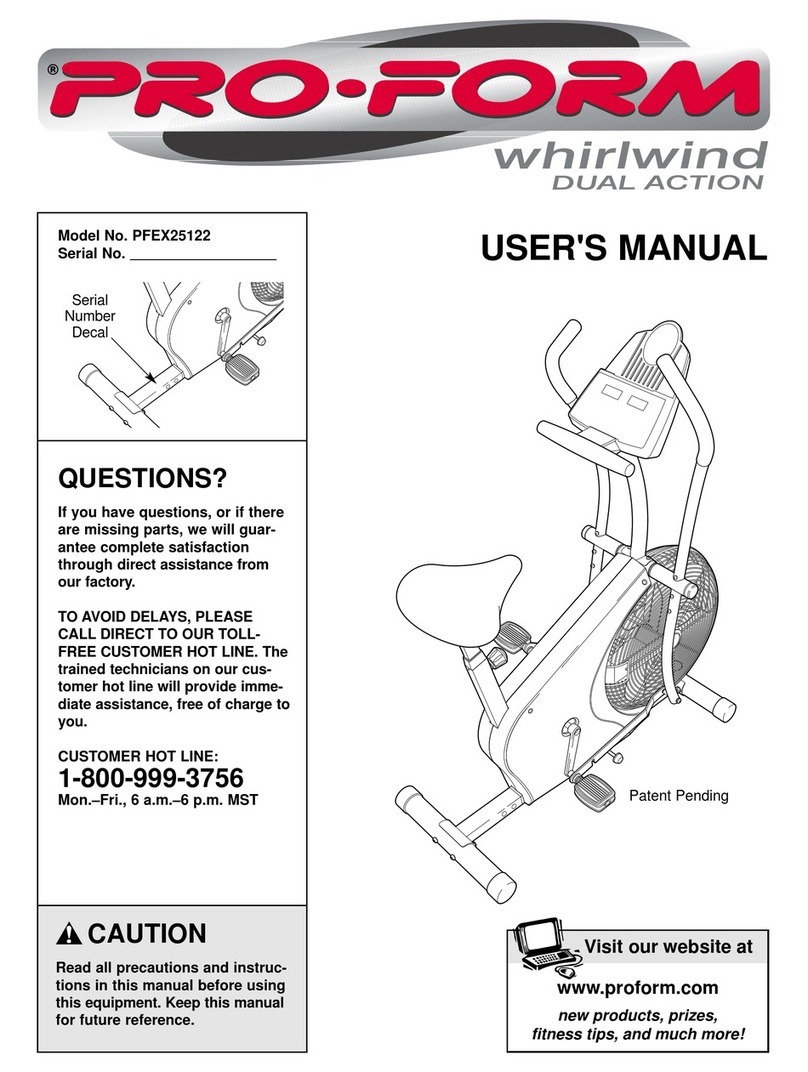
Pro-Form
Pro-Form PFEX25122 User manual

Pro-Form
Pro-Form 245 Zlx Bike User manual

Pro-Form
Pro-Form 225 Zlx Bike User guide
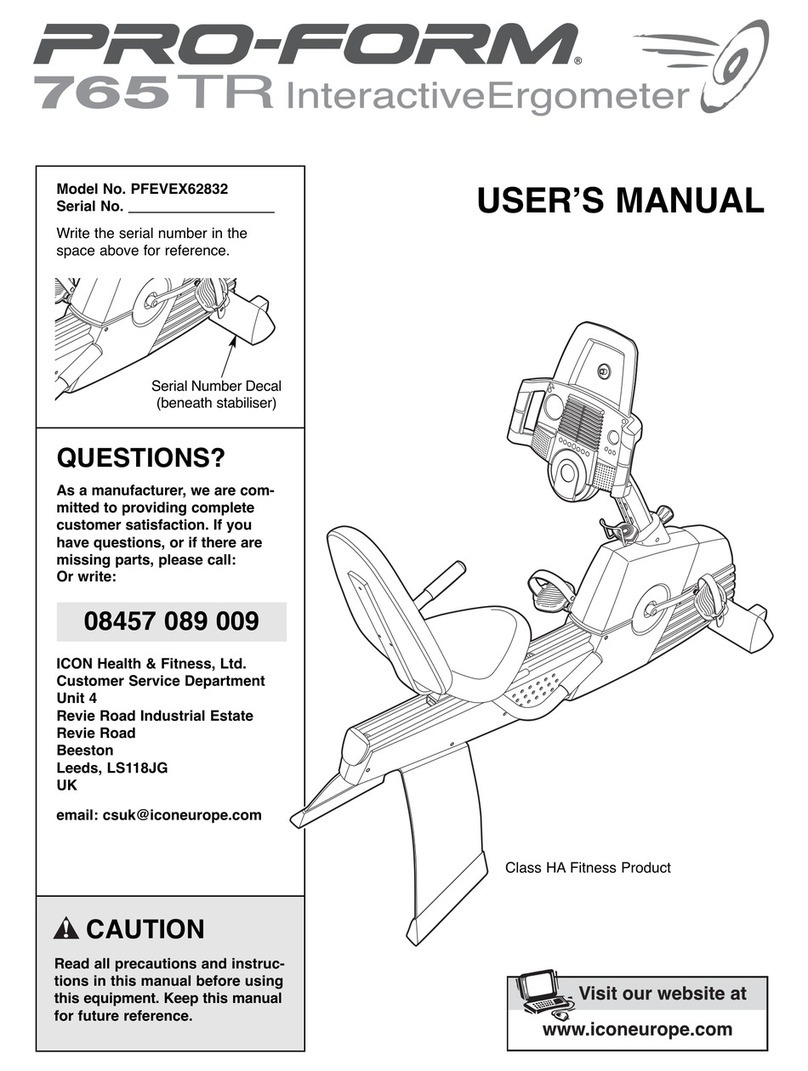
Pro-Form
Pro-Form Interactive Ergometer PFEVEX62832 User manual
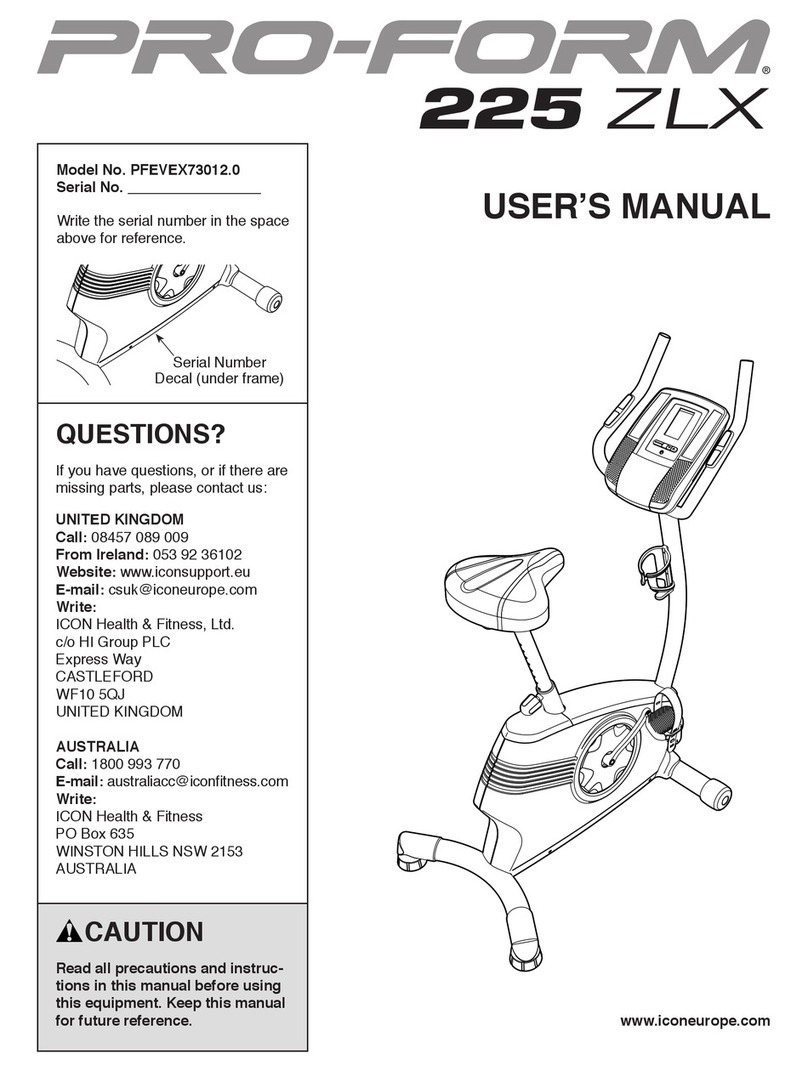
Pro-Form
Pro-Form 225 Zlx Bike User manual
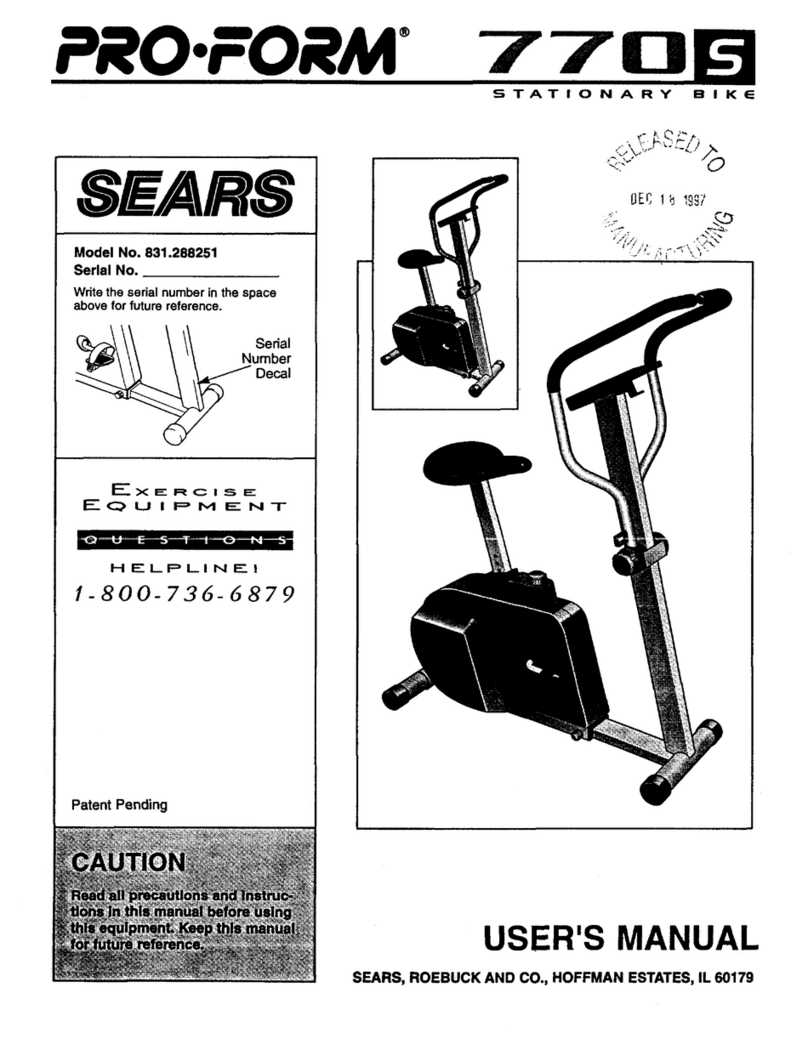
Pro-Form
Pro-Form 770s User manual
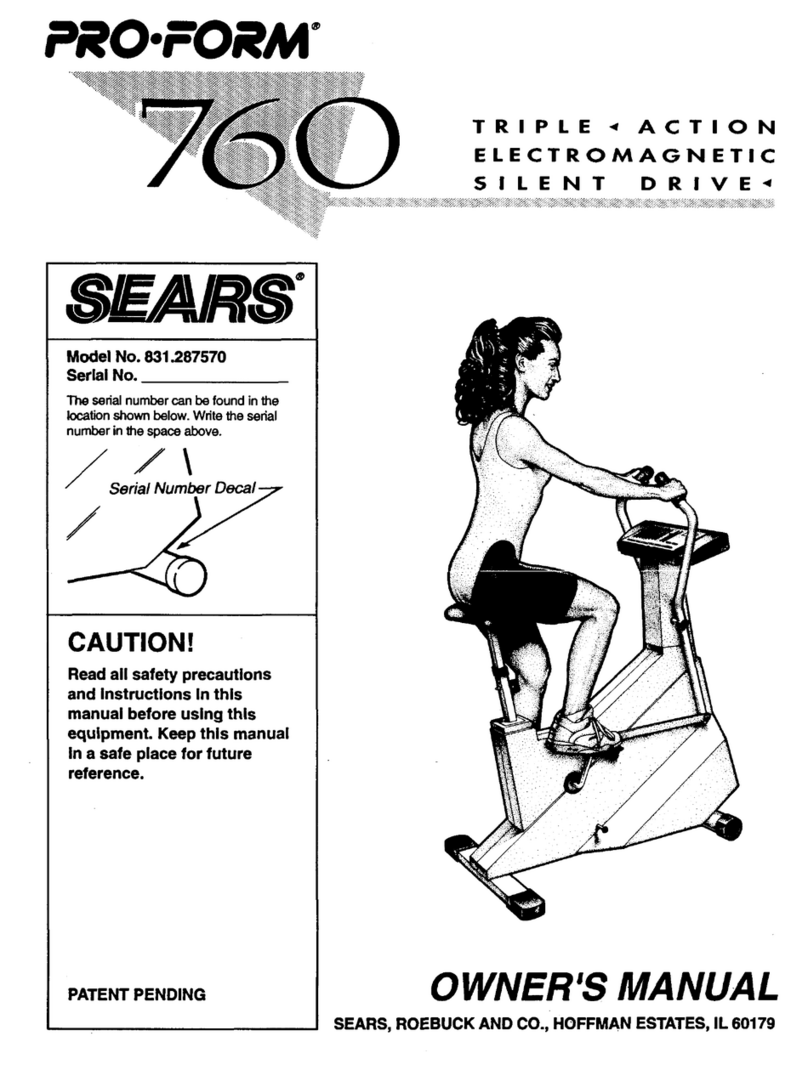
Pro-Form
Pro-Form 760 Crosstrainer Treadmill User manual
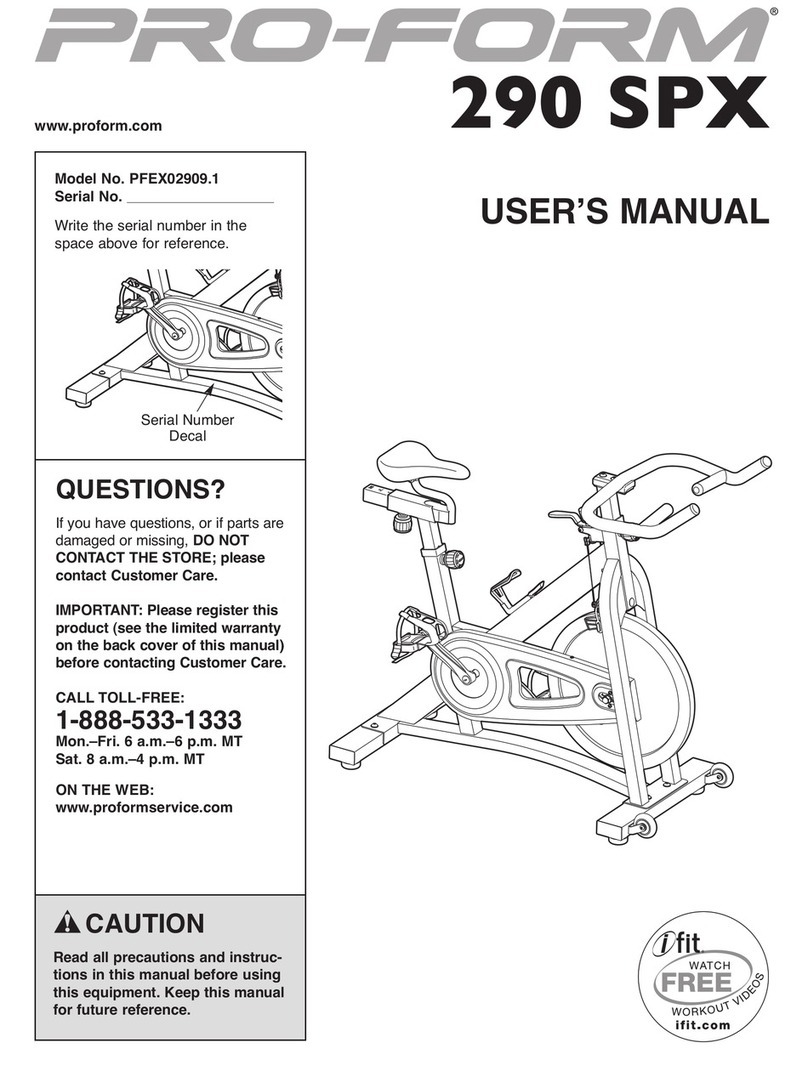
Pro-Form
Pro-Form 290SPX User manual
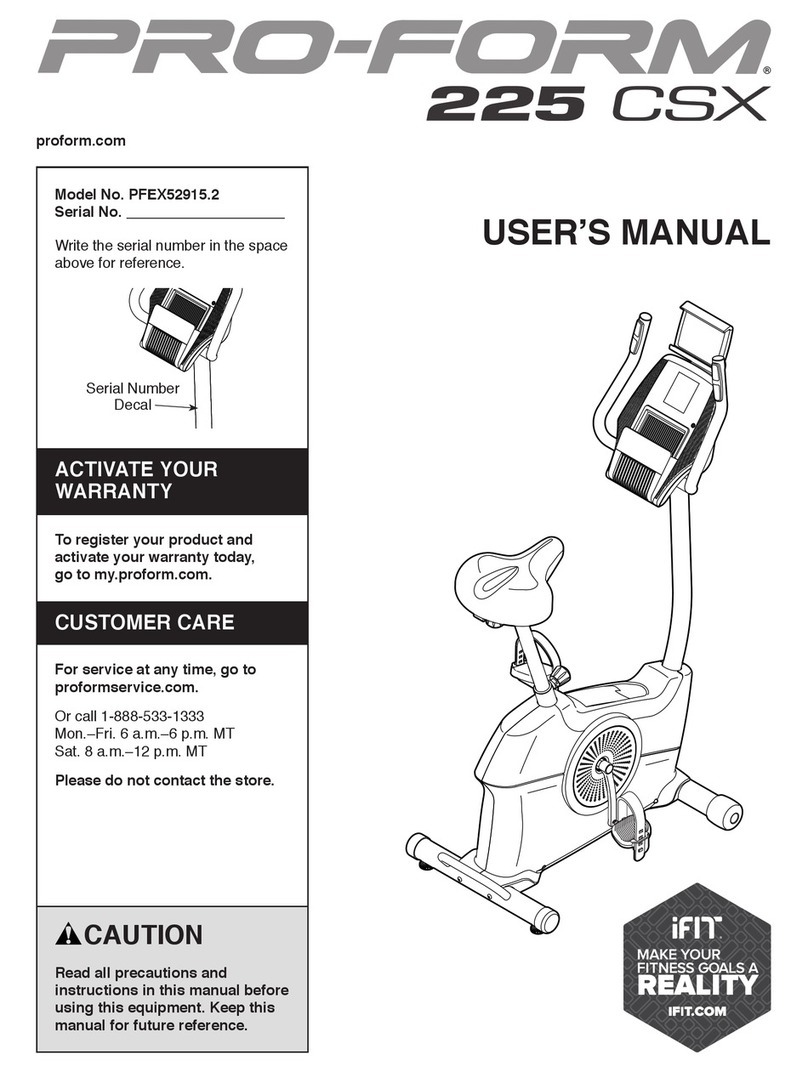
Pro-Form
Pro-Form 225 CSX User manual
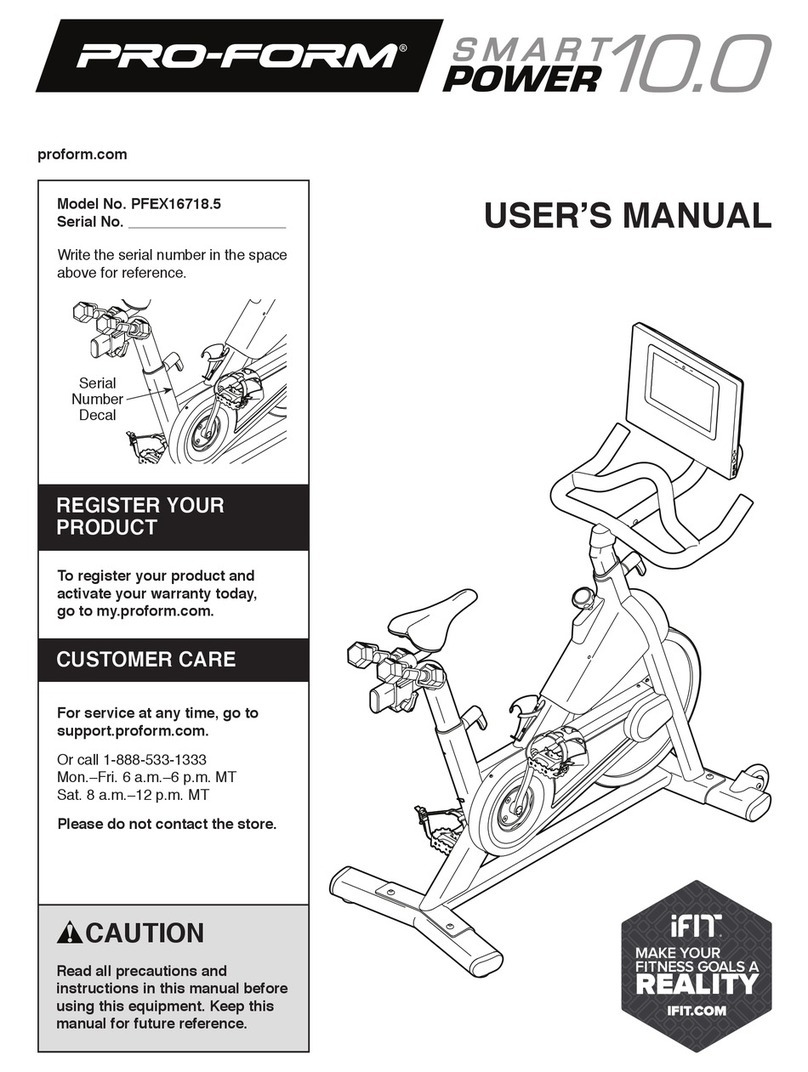
Pro-Form
Pro-Form PFEX16718.5 User manual
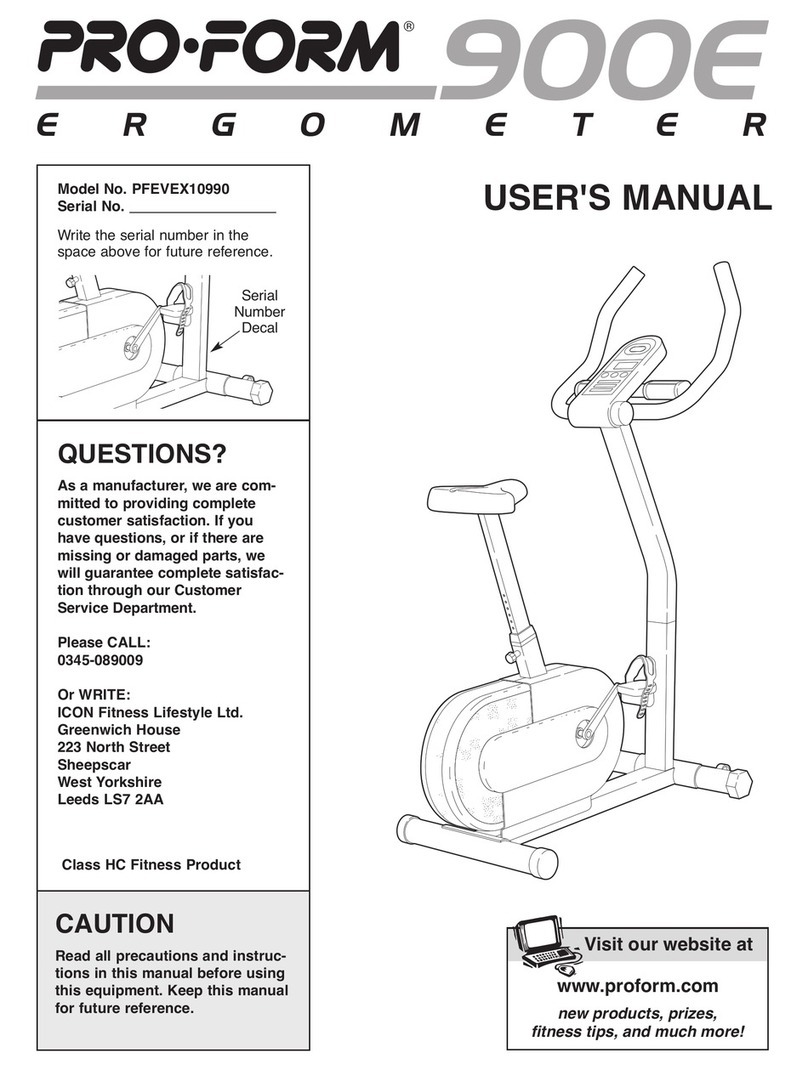
Pro-Form
Pro-Form 900e Bike User manual
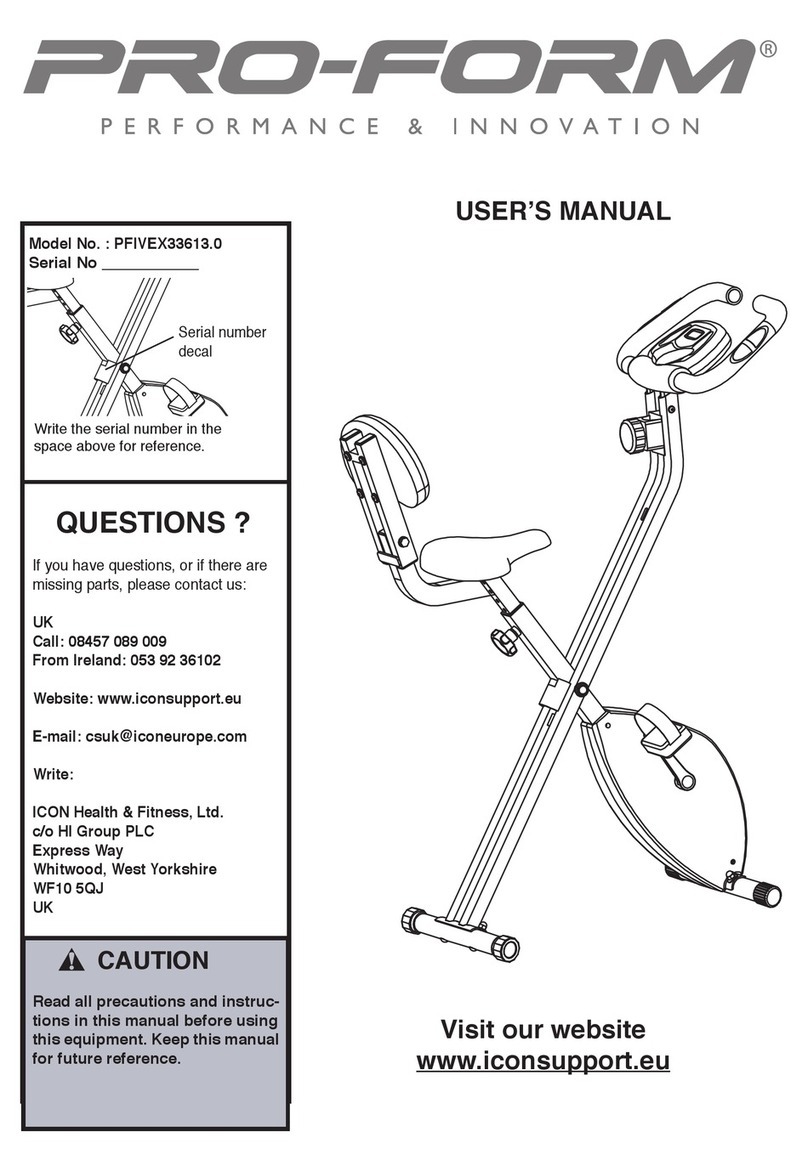
Pro-Form
Pro-Form PFIVEX33613.0 User manual
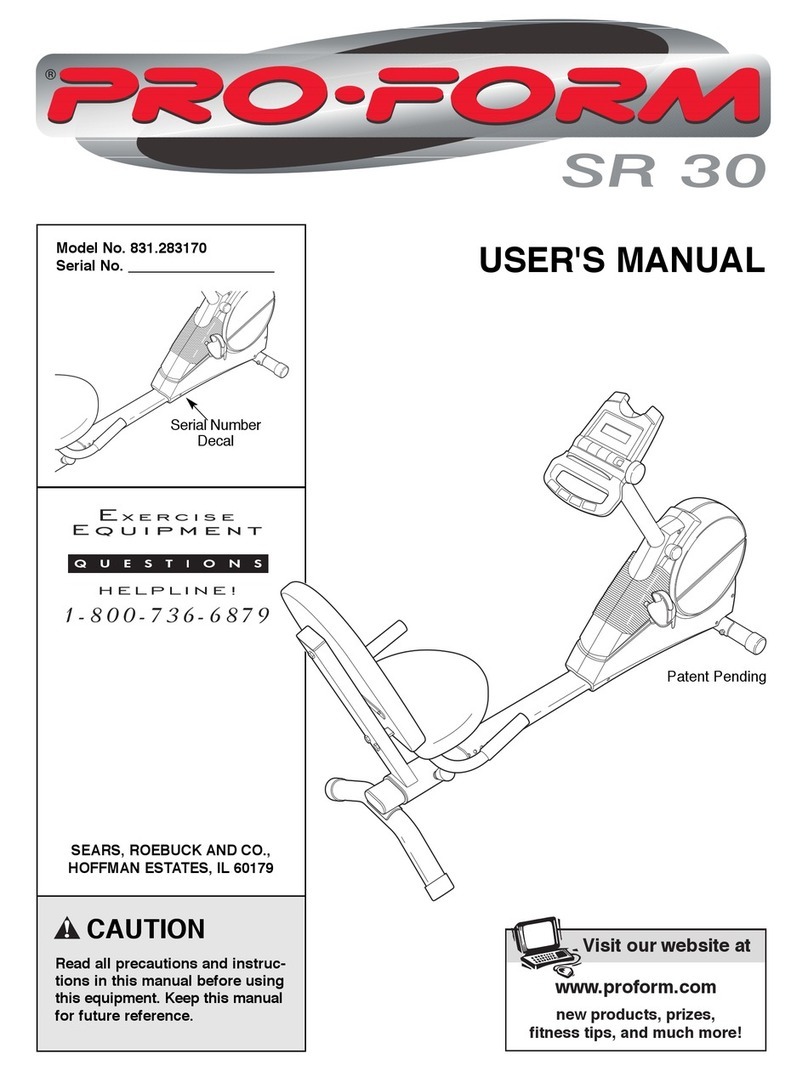
Pro-Form
Pro-Form SR 30 User manual
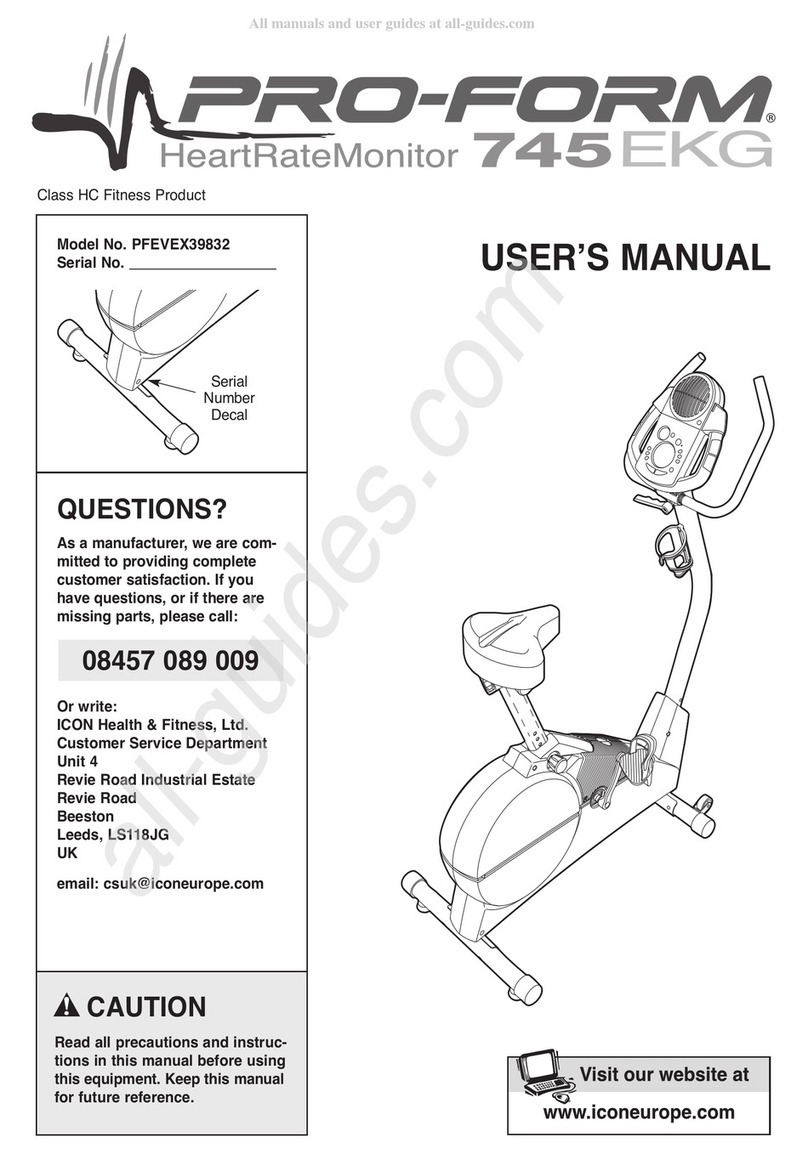
Pro-Form
Pro-Form 745 Ekg Bike User manual

Pro-Form
Pro-Form 7.2c User manual
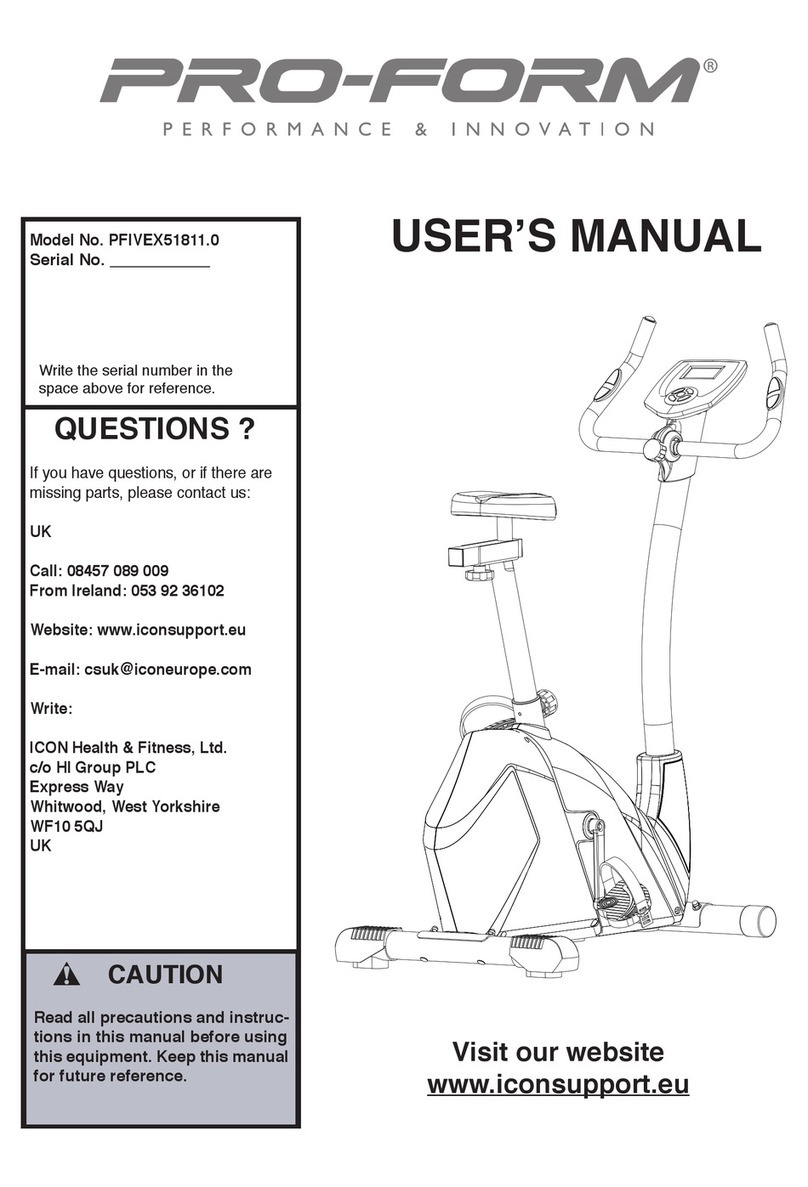
Pro-Form
Pro-Form 275 ZLX User manual
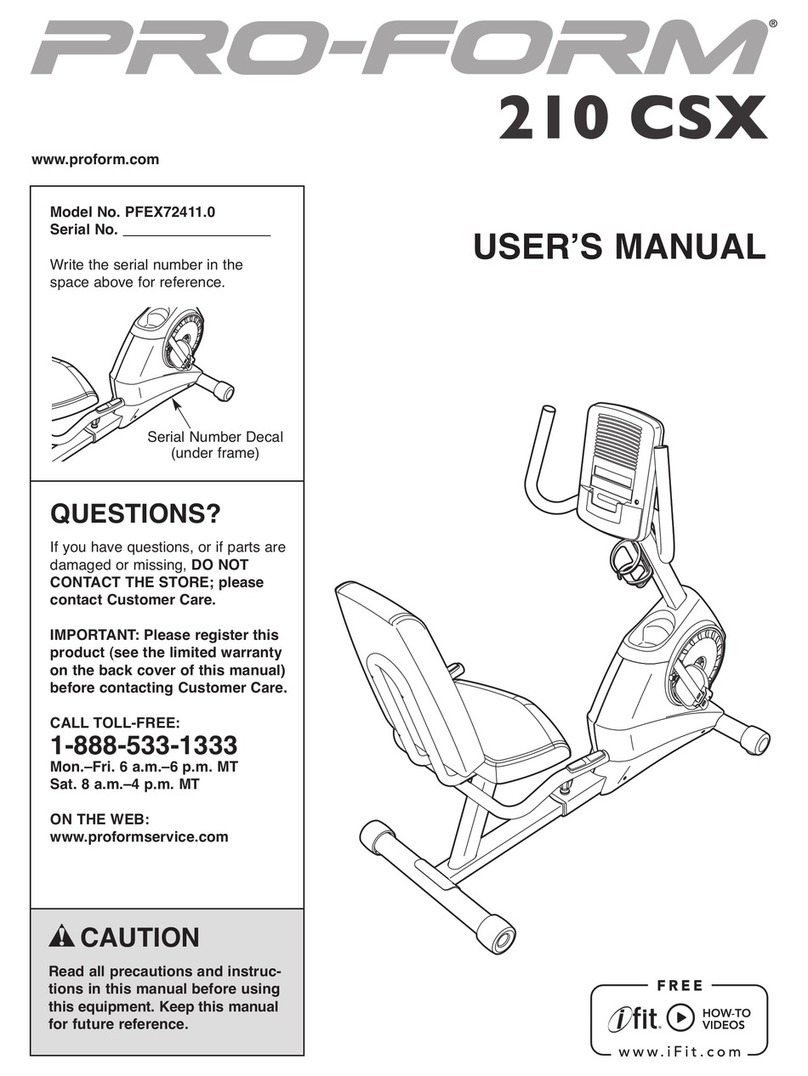
Pro-Form
Pro-Form PFEX72411.0 User manual
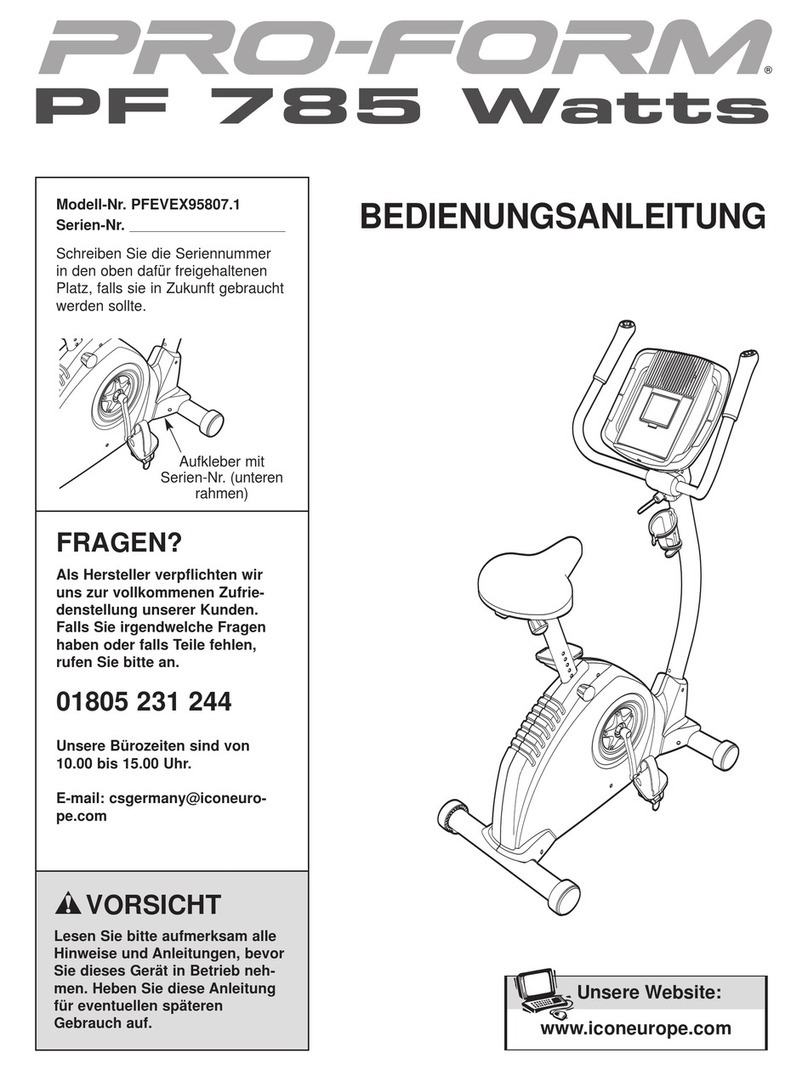
Pro-Form
Pro-Form 785 Watts Bike Quick start guide
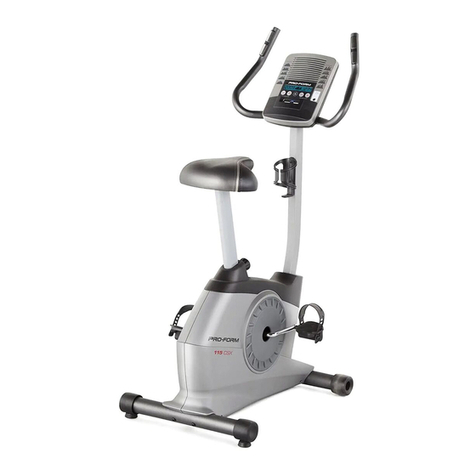
Pro-Form
Pro-Form 115 Csx Bike User manual
Popular Exercise Bike manuals by other brands

Sunny Health & Fitness
Sunny Health & Fitness SF-B121021 user manual

Monark
Monark 827E instruction manual

Stamina
Stamina 1310 owner's manual

American Fitness
American Fitness SPR-BK1072A owner's manual

Cateye
Cateye CS-1000 (CYCLO SIMULATOR) Service manual

BH FITNESS
BH FITNESS H9158H Instructions for assembly and use

